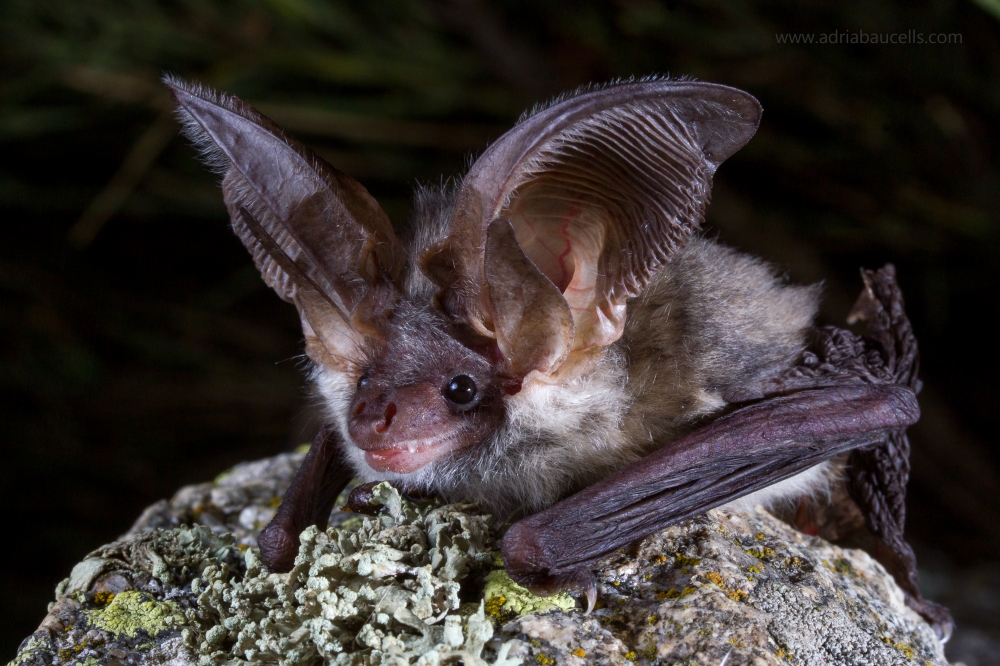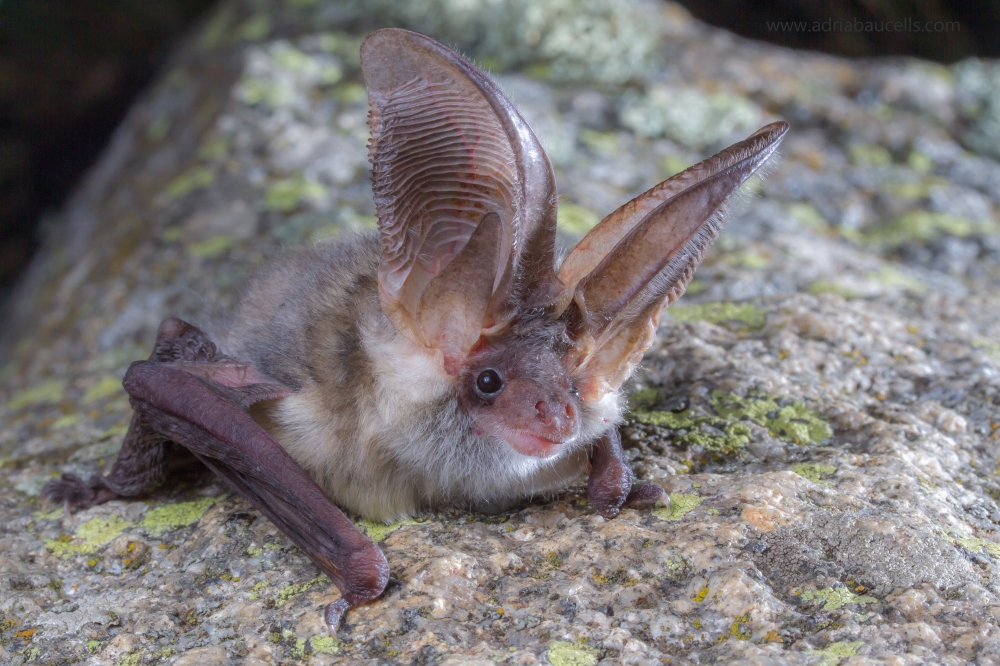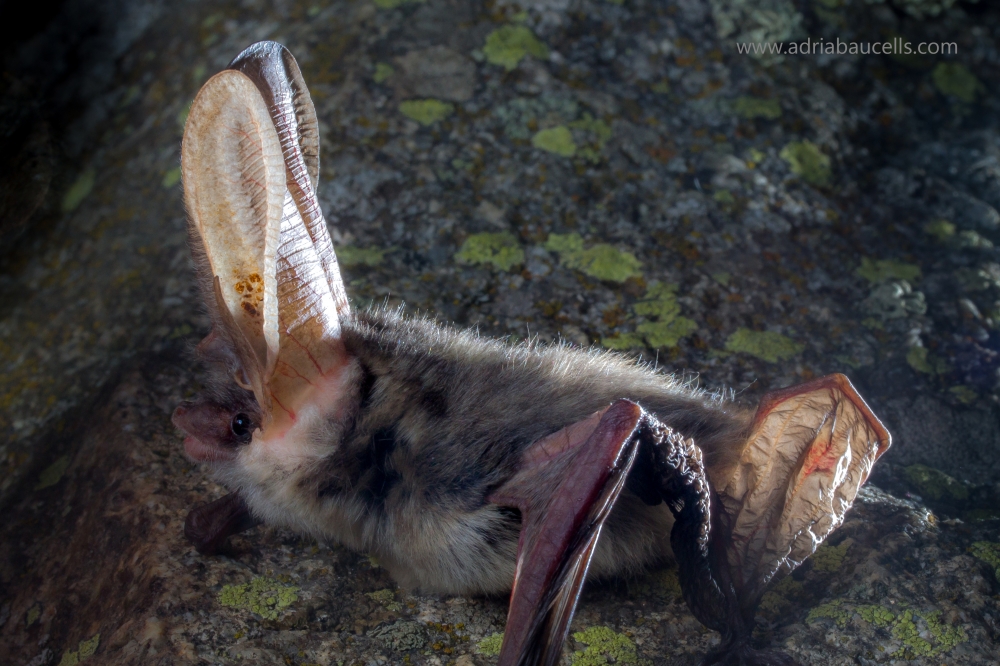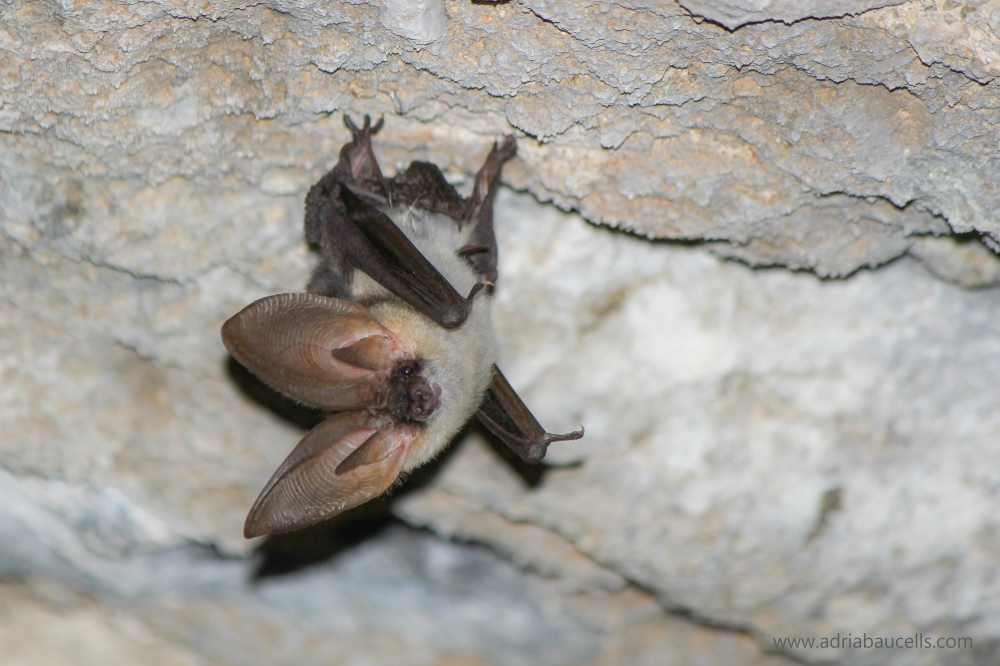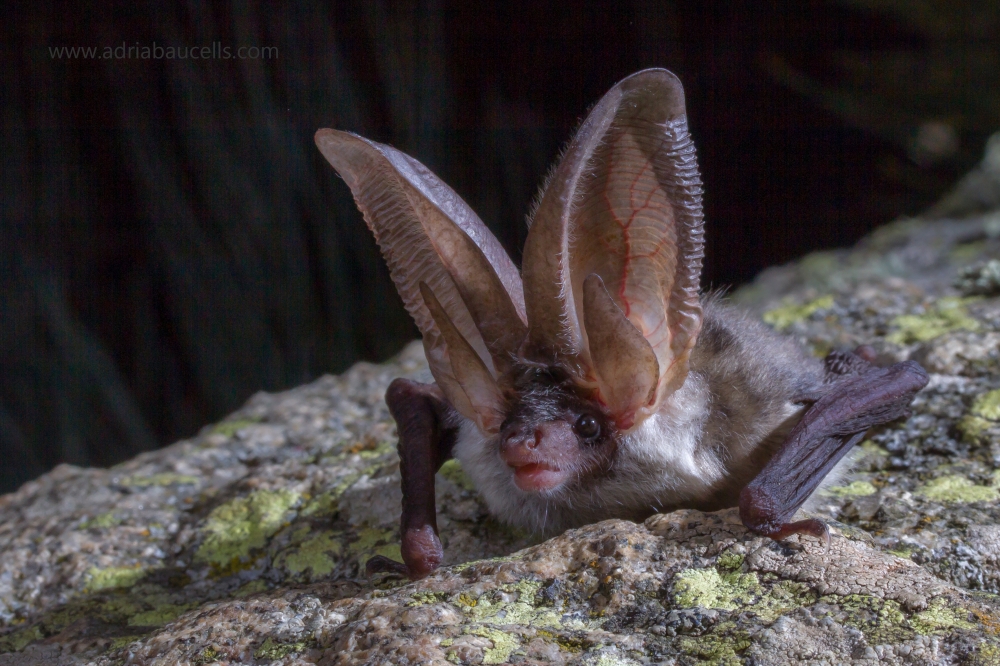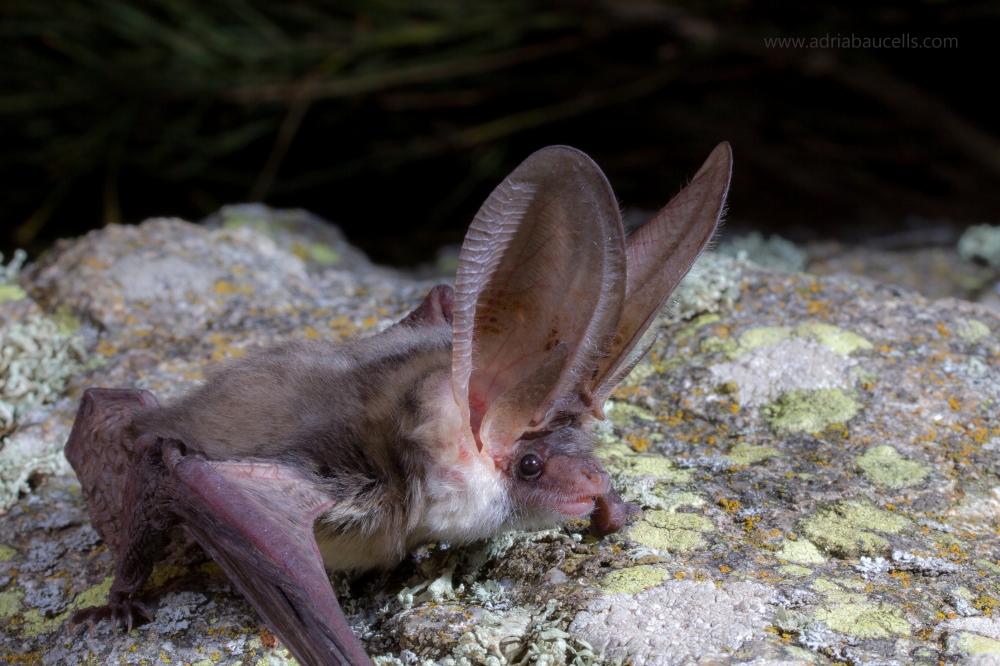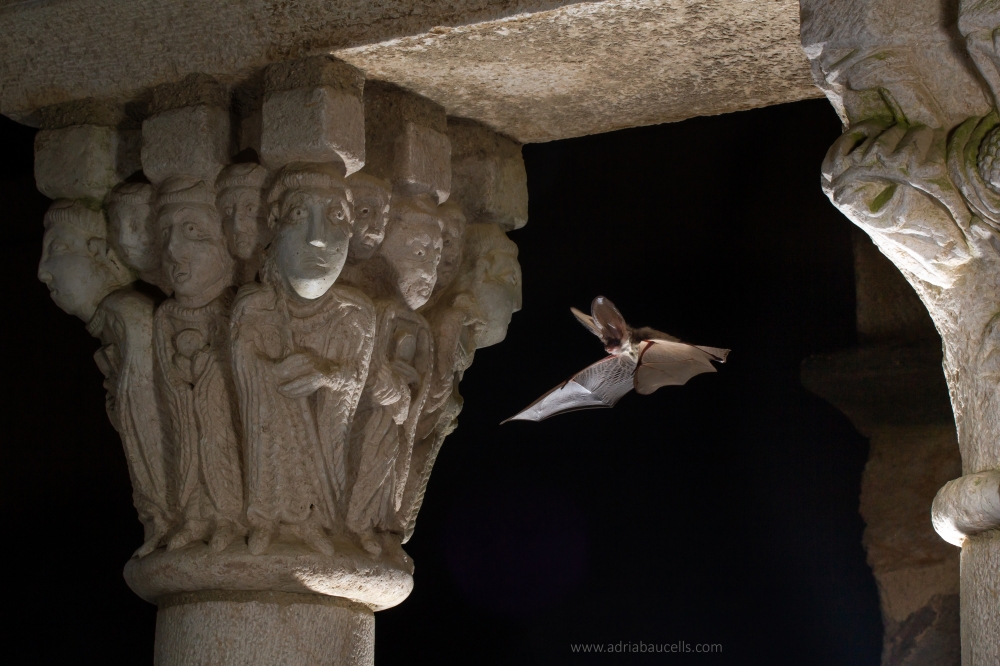Grey long-eared bat
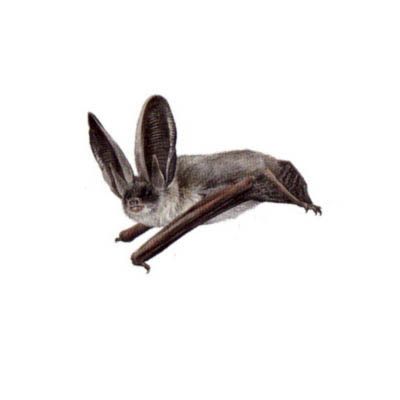
Plecotus austriacus (Fischer, 1829)
Vespertilionidae
Near Threatened
| Other names | |
|---|---|
| Catalan | Orellut gris |
| Spanish | Orejudo gris |
| English | Grey long-eared bat |
| French | Oreillard gris |
| Basque | Belarrihandi gris |
| Galician | Morcego orelludo gris |
Description
Medium-sized bat, with a forearm measuring between 36 and 44 mm and a weight between 6 and 10 g. The ears are long and joined in the middle, with a fairly dark and long tragus (between 14-17 mm). Relatively long snout with a characteristic dark mask. The fur is generally dark gray on the back, with yellowish tones in the east of the Mediterranean populations, and whitish colorations on the ventral part. The tragus is quite dark and long compared to other species.
Very similar to other long-eared bats, it is distinguished from the brown long-eared bat (Plecotus auritus) and the alpine long-eared bat (Plecotus macrobullaris) by the dark eye mask, a wide tragus (between 5.2 and 6.6 mm), a long and narrow snout, short thumbs (<6.5 mm) with also short claws (<5.5 mm).
Fotografies
Distribution
A European species, especially especially abundant in Mediterranean areas, also found in the Balearic Islands, Sardinia, Corsica, and Sicily, but without records from North Africa, Malta, Crete, Cyprus, or the eastern part of Crimea. To the north, it reaches the south of England but does not extend to the Baltic Sea. There are occasional records in the south of Sweden. To the east, it reaches Ukraine and western Turkey.
Roosts and phenology
Summer roosts are usually in buildings in the northern part of its distribution, typically in attics or under roofs, although also in cracks and wall cavities. In the Mediterranean, however, it more often uses natural rock crevices at the entrance of caves. These summer roosts often change frequently. Males use a much greater variety of roosts such as under bridges and, exceptionally, in bat boxes and bird nesting boxes. Breeding colonies typically include 5-30 individuals, although colonies in buildings can contain more than 100 animals. A single pup is born in late June.
Mating can begin in July. It is considered a sedentary species, with the longest recorded movement being between 61-62 km. It is a species quite cold-tolerant, and during hibernation, it uses caves, basements, and rock crevices, usually near the entrance.
Habitat and diet
In central Europe, it is common in inhabited areas, while in the Mediterranean, it is found in landscapes with a mosaic of forests. It is found from sea level up to 2,000 m in altitude, adapted to a wide variety of habitats. In central Europe, it usually feeds in warm valleys, human settlements, gardens, meadows, pastures, horticultural areas, and extensive agricultural areas. A thermophilous species, in the south it is more frequently found in naturalized environments such as forested areas with coniferous and deciduous forests.
Its diet contains a larger amount of moths than that of the golden long-eared bat. During massive emergences of certain arthropods, it also feeds on beetles, crane flies, and other dipterans. Unlike the golden long-eared bat, its diet almost exclusively includes flying insects, although it can also capture insects directly from vegetation. The flight is slow and below 10 meters in height. It usually locates prey directly with its large ears.
Echolocation
Like other species of the same genus, it exhibits frequency-modulated (FM) pulses in which almost always two evident harmonics are found with frequencies between 20 and 30 kHz in the first harmonic and between 40 and 70 kHz in the second, both generally weak and of low intensity. The harmonics usually do not overlap, and the calls are emitted through the mouth and nose simultaneously. Like all long-eared bats, it is included in the phonic group Plecotus sp..
Status
According to the IUCN Red List, it is considered Near Threatened, with a negative population trend. This species is protected by national legislation, the Eurobats agreement, the Bern Convention, and the European Habitat and Species Directive. It is relatively common throughout its distribution, especially in the Mediterranean, although it is less abundant in more eastern regions. According to information provided in some reports, its population has decreased in Austria and Croatia, likely as a result of habitat loss and agricultural intensification.
